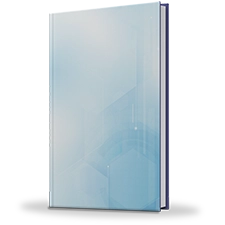Key Benefits
The U.S. automotive lithium-sulfur battery market study provides in-depth analysis pertaining to the market size & forecast, segmental analysis, country level outlook, market opportunities, drivers, and key trends.
The Porter’s five forces model illustrates the potency of buyers & sellers, which is estimated to assist the market players to adopt effective strategies. Below mentioned pointers included under this section:
Threat of new entrants
Threat of substitutes
Bargaining power of suppliers
Bargaining power of consumers
Competitive rivalry among key players
By Battery Capacity
Between 501 to 1000 mAh segment was the leading segment during forecast period.
A comprehensive analysis of the factors that drive and restrict the growth of the U.S. automotive lithium-sulfur battery market is provided.
The U.S. automotive lithium-sulfur battery market report offers qualitative and quantitative analysis for 2025-2035 years. Qualitative analysis includes value chain analysis, key regulations, patent analysis, and pain point analysis.
Value chain analysis: AMR offers a detailed analysis on all the stages along with the key stakeholders operating in that respective stage in addition to their strategic moves and their impact on the market.
Key regulations: AMR provides key regulations and standards for the industries. This section lists, not exhaustively, some of the regulatory documents of product type.
Pain point analysis: The report includes the details about the challenges faced by major stakeholders operating in all stages of the value chain in addition to the strategic decisions taken by other players to overcome them.
Furthermore, the U.S. automotive lithium-sulfur battery market report will be providing the impact of the COVID-19 pandemic on the market, which will help to formulate the strategies to gain competitive edge over other players.
COVID-19 Impact Analysis
The COVID-19 pandemic outburst has led to a notable impact on the economy, globally. The report provides an analysis on micro and macro economic impact due to the COVID-19. Moreover, it highlights the direct impact of COVID-19 on the U.S. automotive lithium-sulfur battery market in form of a qualitative analysis. Furthermore, it summarizes the details about the market size and share due to the impact of COVID-19. Additionally, the study provides an analysis on the key strategies adopted by key players during the global health crisis. The report will further focus on the impact of COVID-19 on the supply chain of U.S. automotive lithium-sulfur battery market. In addition, it portrays a post COVID-19 scenario, due to decline in the risk of infection and introduction of vaccines such as Covaxin, Sputnik, and Covishield.
Competition Analysis
The report offers top 10 company profiles (not limited to 10) and their market share analysis. Company profiles include detailed information related to market share, key developments, company description, and financial details. Furthermore, company profiles section includes the data related to the company’s product/services and brand names.
The U.S. automotive lithium-sulfur battery market has been segmented into battery capacity, propulsion type, vehicle type.
Key segmental analysis is provided in both quantitative and qualitative terms. This will help to assess current addressable market along with untapped growth opportunities.
U.S. Automotive Lithium-sulfur Battery Market Report Highlights
| Aspects | Details |
| By Battery Capacity |
|
| By Propulsion Type |
|
| By Vehicle Type |
|
Loading Table Of Content...



